Introduction
In the vast realm of culinary arts, there exists a dish that combines the savory depths of traditional cooking with the innovative flair of modern gastronomy—Dry-Pot Doenjang Tofu. This Korean-inspired fusion dish takes the humble tofu, a staple in many Asian kitchens, and elevates it to a gourmet experience through a meticulous blend of spices, sauces, and cooking techniques. While the name might suggest a direct tie to Korean doenjang (fermented soybean paste), the dry-pot cooking method, originally from Sichuan cuisine in China, gives this dish its unique character.
In this article, we will embark on a culinary journey, exploring the intricacies of making Dry-Pot Doenjang Tofu. From selecting the perfect ingredients to mastering the cooking process, each step will be meticulously detailed to ensure you can recreate this delightful dish at home. By the end, you will not only understand how to prepare it but also appreciate the harmonious blend of flavors that make it so special.
Understanding the Ingredients
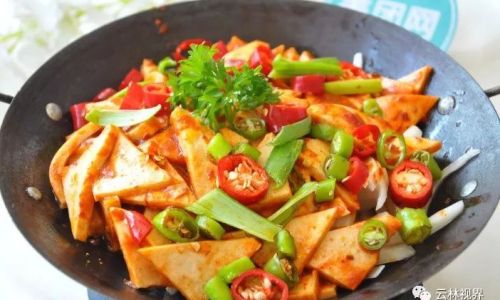
Before diving into the recipe, let’s familiarize ourselves with the key ingredients that form the backbone of Dry-Pot Doenjang Tofu:
-
Tofu: Specifically, we use firm or extra-firm tofu for this dish. Its dense texture holds up well to the intense cooking process, absorbing flavors while maintaining its structural integrity.
-
Doenjang (Fermented Soybean Paste): While traditional dry-pot dishes often use chili peppers and Sichuan peppercorns, the introduction of doenjang adds a umami-rich, slightly fermented flavor that complements the tofu beautifully. If doenjang is unavailable, a combination of miso paste and soy sauce can serve as a decent substitute.
-
Vegetables: A variety of vegetables such as bell peppers, zucchini, mushrooms, and baby corn add color, texture, and additional nutrients to the dish. Feel free to customize the vegetable selection based on your preference or seasonal availability.
-
Aromatics: Garlic, ginger, and scallions provide the essential aromatic backbone. Their pungent, fresh flavors help balance the richness of the doenjang.
-
Spices and Seasonings: Sichuan peppercorns, star anise, and cloves add depth and complexity to the dish. For heat, you can use red pepper flakes or fresh chili peppers, adjusting the amount to suit your palate.
-
Vegetable Oil: A neutral oil like canola or grapeseed is ideal for frying, ensuring the flavors of the ingredients shine through without being overpowered by the oil.
-
Stock or Broth: Chicken, vegetable, or mushroom broth adds moisture and additional flavor to the dish, preventing it from drying out during the cooking process.
Preparing the Ingredients
-
Tofu Preparation: Drain and press the tofu to remove excess water. This can be done by wrapping the tofu block in a clean kitchen towel and placing a heavy object on top for about 15-20 minutes. Alternatively, you can use a tofu press. Once pressed, cut the tofu into bite-sized cubes.
-
Vegetable Preparation: Wash and chop the vegetables into bite-sized pieces. Try to keep the sizes consistent for even cooking.
-
Aromatics and Spices: Mince the garlic and ginger finely. Slice the scallions into thin rounds, separating the white and green parts for later use. Toast the Sichuan peppercorns, star anise, and cloves lightly in a dry pan until fragrant, then grind them coarsely using a mortar and pestle or spice grinder.
Cooking the Dry-Pot Doenjang Tofu
Step 1: Pre-cooking the Tofu
-
Heat a generous amount of vegetable oil in a deep, heavy-bottomed pan or wok over medium-high heat. The oil should be deep enough to partially submerge the tofu cubes.
-
Carefully add the tofu cubes to the hot oil, frying them until golden brown and crispy on all sides. This process will take about 3-4 minutes per batch, depending on the size of your pan. Use a slotted spoon to transfer the fried tofu to a paper towel-lined plate to drain excess oil.
Step 2: Sautéing the Aromatics and Vegetables
-
In the same pan, reduce the oil to about 2-3 tablespoons and place it back over medium heat.
-
Add the minced garlic, ginger, and the white parts of the scallions. Sauté until fragrant, about 30 seconds to 1 minute. Be careful not to burn the garlic and ginger, as they will turn bitter.
-
Add the chopped vegetables to the pan, stirring occasionally until they begin to soften and take on some color, about 3-4 minutes.
Step 3: Adding the Spices and Doenjang
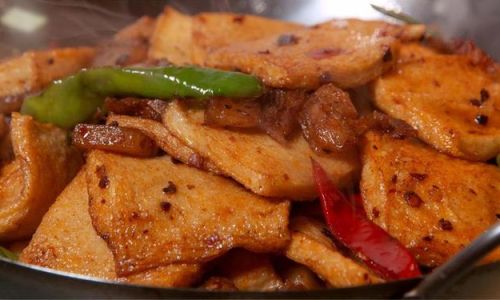
-
Sprinkle the ground Sichuan peppercorn mixture over the vegetables, stirring to incorporate.
-
Add the doenjang (or miso paste and soy sauce mixture) to the pan, stirring well to coat the vegetables evenly. Cook for another 1-2 minutes, allowing the flavors to meld together.
Step 4: Simmering with Broth and Tofu
-
Pour in enough stock or broth to just cover the bottom of the vegetables in the pan. Increase the heat to high and bring the mixture to a simmer.
-
Nestle the fried tofu cubes into the vegetable mixture, gently pressing them down so they are partially submerged in the liquid. Reduce the heat to low and let the dish simmer gently, uncovered, for about 10-15 minutes. This allows the tofu to absorb the flavors of the sauce and the vegetables to cook through completely.
Step 5: Final Touches and Serving
-
Check the seasoning, adding more soy sauce or salt if necessary. The flavor should be savory, slightly sweet, and slightly spicy, with a hint of umami from the doenjang.
-
Sprinkle the green parts of the scallions over the top for a fresh, aromatic finish.
-
If desired, you can garnish with a few chili threads or sesame seeds for added color and texture.
-
Serve the Dry-Pot Doenjang Tofu hot, directly from the pan, as the dish is meant to be enjoyed communally, with each person scooping portions onto their plates.
Tips for Perfecting Your Dry-Pot Doenjang Tofu
-
Quality Ingredients: Use high-quality tofu and fresh vegetables for the best results. The quality of your ingredients will directly impact the final flavor of the dish.
-
Control the Heat: Be mindful of the heat when sautéing the aromatics and frying the tofu. Too high heat can burn the garlic and ginger, while too low heat will result in soggy tofu.
-
Adjust the Spiciness: Feel free to adjust the amount of chili flakes or fresh chili peppers to suit your taste preferences. If you prefer a less spicy dish, reduce the amount or omit them altogether.
-
Don’t Overcook: The key to a successful dry-pot dish is to cook it until the ingredients are tender but still retain some texture. Overcooking will result in a mushy, flavorless mess.
-
Serve Immediately: Dry-Pot Doenjang Tofu is best enjoyed hot and fresh from the pan. The flavors and textures will diminish if the dish is allowed to sit for too long.
Conclusion
Making Dry-Pot Doenjang Tofu at home is a rewarding culinary endeavor that combines the best of traditional and modern cooking techniques. By carefully selecting and preparing your ingredients, mastering the cooking process, and paying attention to the details, you can create a dish that is not only visually appealing but also bursting with flavor.
This dish is perfect for a cozy dinner with family or friends, where everyone can enjoy the communal experience of scooping portions from the shared pan. Its unique blend of savory, sweet, and spicy flavors, coupled with the crispy tofu and tender vegetables, makes it a standout dish that is sure to impress even the most discerning palate.
So, the next time you’re in the mood for something different, give Dry-Pot Doenjang Tofu a try. With its harmonious blend of flavors and textures, it’s a dish that promises to delight your taste buds and leave you longing for the next bite. Happy cooking!
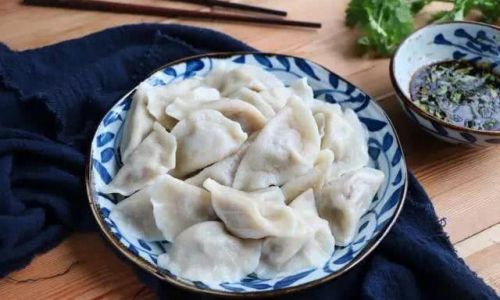
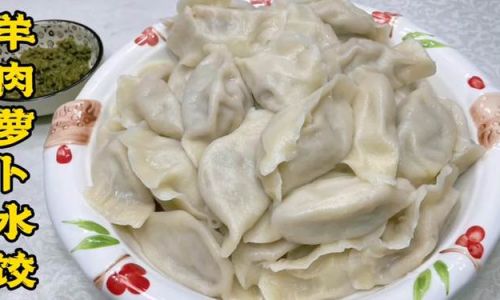
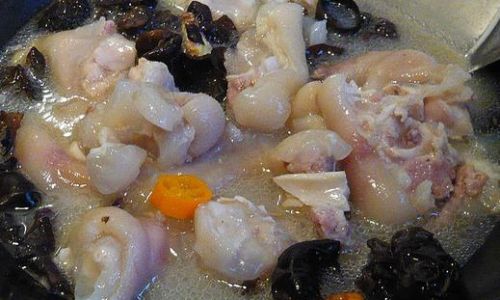
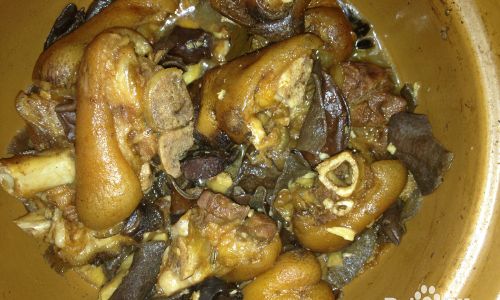
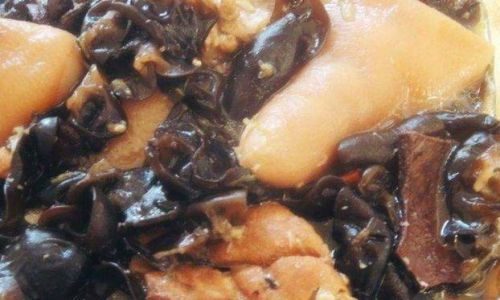
0 comments